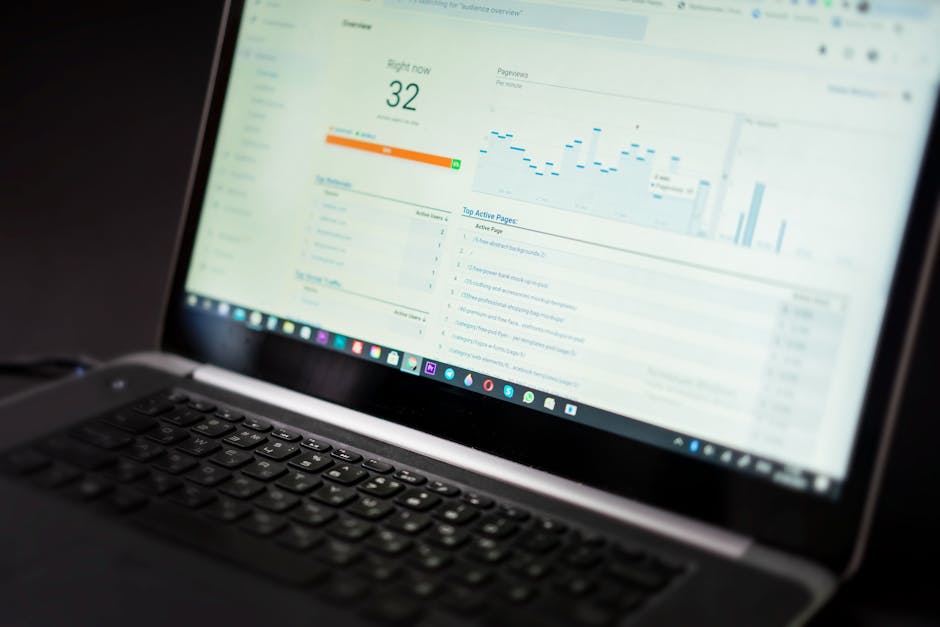Mastering Accounts Receivable: Strategies for Optimizing Cash Flow and Financial Health
“Effective accounts receivable management is crucial for maintaining healthy cash flow and financial stability. This comprehensive guide explores best practices, automation strategies, and key metrics for optimizing your AR process, reducing DSO, and improving your organization's overall financial performance. ”

Understanding Accounts Receivable: The Lifeblood of Business Cash Flow
Accounts receivable (AR) represents the money that customers owe a business for goods or services that have been delivered but not yet paid for. It's essentially an extension of credit to customers, allowing them to purchase now and pay later according to agreed-upon terms. For many organizations, accounts receivable constitutes a substantial portion of current assets and plays a critical role in maintaining healthy cash flow.

Effective accounts receivable management ensures that your company can meet its financial obligations, fund operations, and invest in growth opportunities. When mismanaged, it can lead to cash flow problems, increased borrowing costs, and even business failure. According to financial experts, optimizing your accounts receivable process can significantly improve your organization's financial health and operational efficiency.
The Impact of Accounts Receivable on Your Financial Health
Accounts receivable directly affects several aspects of your organization's financial standing:
Cash Flow Management
The speed at which you convert accounts receivable into cash determines your ability to pay suppliers, employees, and other operational expenses. Delayed collections can force businesses to rely on credit lines or loans to cover shortfalls, increasing costs and reducing profitability.
Working Capital Optimization
Accounts receivable ties up working capital that could otherwise be used for business operations or investment opportunities. By reducing the time between billing and payment collection, companies can free up capital for strategic initiatives and growth.
Financial Stability
A well-managed accounts receivable process provides predictable cash inflows, allowing for better financial planning and reduced dependency on external financing. This stability is particularly valuable during economic downturns or periods of rapid growth.
Key Metrics for Monitoring Accounts Receivable Performance
To effectively manage your accounts receivable, you need to track several important metrics:
Days Sales Outstanding (DSO)
DSO measures the average number of days it takes to collect payment after a sale is made. A lower DSO indicates more efficient collection practices and better cash flow. Calculate it using this formula:
DSO = (Accounts Receivable / Total Credit Sales) × Number of Days in Period
Accounts Receivable Turnover Ratio
This ratio shows how efficiently a company collects on its credit sales. A higher turnover ratio suggests better collection practices:
AR Turnover Ratio = Net Credit Sales / Average Accounts Receivable
Aging Reports
Aging reports categorize outstanding invoices by the length of time they've been unpaid (typically 0-30 days, 31-60 days, 61-90 days, and 90+ days). These reports help identify problematic accounts and prioritize collection efforts.

Bad Debt Ratio
This metric indicates the percentage of receivables that ultimately become uncollectible:
Bad Debt Ratio = Bad Debt Expense / Total Credit Sales
Best Practices for Optimizing Your Accounts Receivable Process
Implementing these strategies can help streamline your accounts receivable management and improve cash flow:
1. Establish Clear Credit Policies
Develop comprehensive credit policies that outline customer qualification criteria, credit limits, payment terms, and consequences for late payments. Communicate these policies clearly to customers before extending credit.
2. Streamline Your Invoicing Process
Send invoices promptly after delivering goods or services. Ensure invoices are accurate, clearly state payment terms, and include all necessary information. Consider offering electronic invoicing to speed delivery and reduce paper handling.
3. Offer Multiple Payment Options
Make it easy for customers to pay by accepting various payment methods, including credit cards, ACH transfers, and online payment platforms. The easier it is to pay, the faster you'll receive your money.
4. Implement Early Payment Incentives
Encourage prompt payment by offering discounts for early payment (e.g., 2% discount if paid within 10 days). While this slightly reduces your revenue, it can significantly improve cash flow and reduce collection costs.
5. Automate Reminder Communications
Set up automated reminders for upcoming and overdue payments. Start with gentle reminders before escalating to more formal communications as invoices age. Personalize communications based on customer history and relationship value.
Leveraging Technology to Enhance Accounts Receivable Management
Modern technology solutions can dramatically improve the efficiency and effectiveness of your accounts receivable process:
Accounts Receivable Automation Software
AR automation software streamlines the entire receivables process, from invoice generation to payment application. These systems can automatically send invoices, track payment status, generate aging reports, and even predict cash flow based on historical payment patterns.
Customer Relationship Management (CRM) Integration
Integrating your AR system with your CRM allows for better visibility into customer relationships and payment histories. This integration helps sales and customer service teams address payment issues while maintaining positive customer relationships.
Electronic Payment Platforms
Online payment portals make it easier for customers to pay invoices and provide real-time visibility into payment status. These platforms can also automatically reconcile payments with invoices, reducing manual processing time.
Data Analytics and Reporting Tools
Advanced analytics tools can identify payment trends, predict late payments, and recommend collection strategies based on customer behavior patterns. These insights allow for more proactive management of potential payment issues.

Developing an Effective Collections Strategy
Even with the best preventive measures, some accounts will require collection efforts. A structured approach to collections can maximize recovery while preserving customer relationships:
Segment Your Accounts
Categorize overdue accounts based on factors such as amount owed, payment history, and customer relationship value. This segmentation allows for tailored collection approaches that balance recovery likelihood with customer retention.
Establish a Progressive Contact Schedule
Create a systematic schedule for contacting late-paying customers, gradually escalating from friendly reminders to more formal demands. Document all communications for legal compliance and future reference.
Train Collection Staff
Ensure that employees handling collections are trained in both effective collection techniques and appropriate customer service skills. The goal is to recover payment while maintaining positive customer relationships whenever possible.
Consider Outsourcing Difficult Collections
For severely delinquent accounts, consider engaging a professional collection agency or attorney. While these services involve fees, they may recover funds that would otherwise be written off as bad debt.
Managing Accounts Receivable During Economic Uncertainty
Economic downturns or industry-specific challenges can significantly impact your customers' ability to pay. During these periods, consider these strategies:
Reassess Credit Risks
Review your customer portfolio to identify accounts with increased payment risk. Consider adjusting credit limits or terms for high-risk customers to limit potential losses.
Offer Payment Plans
For valuable customers experiencing temporary financial difficulties, consider offering structured payment plans that allow them to maintain their relationship with your business while managing their cash flow constraints.
Monitor Industry Trends
Stay informed about economic conditions affecting your customers' industries. Proactive awareness allows you to anticipate payment issues and adjust your credit and collection strategies accordingly.
Maintain Cash Reserves
Build sufficient cash reserves to weather periods of slower collections. This financial buffer provides stability during economic uncertainties and reduces pressure to accept unfavorable payment terms.
The Role of Cross-Departmental Collaboration in AR Management
Effective accounts receivable management requires coordination across multiple departments:
Sales and AR Alignment
Sales teams should understand credit policies and incorporate them into customer discussions. Similarly, AR staff should recognize the importance of maintaining positive customer relationships while pursuing collections.
Finance and Operations Coordination
Finance teams need visibility into operational timelines to set appropriate payment terms and forecast cash flow accurately. Operations teams should understand how delivery schedules and service quality impact payment timeliness.
Executive Leadership Involvement
Senior management should regularly review AR performance metrics and support necessary process improvements. Their involvement signals the organizational importance of effective receivables management.
Conclusion: Building a Strategic Approach to Accounts Receivable
Accounts receivable management is far more than a back-office accounting function—it's a strategic business process that directly impacts your organization's financial health and customer relationships. By implementing the best practices outlined in this article, leveraging appropriate technology solutions, and fostering cross-departmental collaboration, you can transform your accounts receivable process from a reactive collection activity to a proactive cash flow management strategy.
Remember that the goal of accounts receivable management isn't simply to collect payment—it's to optimize the entire order-to-cash cycle while maintaining strong customer relationships. With the right approach, you can reduce DSO, improve cash flow predictability, and contribute significantly to your organization's financial stability and growth potential.
By treating accounts receivable as a strategic asset rather than just an accounting entry, you position your organization for improved financial performance and competitive advantage in any economic environment.